https://weightliftingforpower.com/discover-the-magic-of-bodyweight-training-for-functional-strength/
Discover The Magic Of Bodyweight Training For Functional Strength
Bodyweight training, a form of exercise that harnesses the weight of your own body to resist gravity, is a testament to your body’s innate strength, agility, and endurance. Its unique feature of not requiring a gym membership or specialized equipment makes it accessible and adaptable, fitting seamlessly into any lifestyle and empowering you to take charge of your fitness journey.
Bodyweight exercises, a cornerstone of physical conditioning since ancient times, have transcended generations, from the warriors of Ancient Greece to the modern-day athlete. This enduring tradition, rooted in its simplicity and effectiveness, is a testament to its timelessness and the rich fitness tradition you are a part of.
Unlike traditional weightlifting, which often requires barbells, dumbbells, or machines, bodyweight training focuses on movements that don’t need external weights. Mastering control over your body is essential for effectively performing exercises that target various muscle groups. Enhancing your coordination and balance can significantly benefit your daily activities.
Bodyweight training is not just about physical strength; it’s a holistic journey that engages your mind and body. The focus and patience required to improve form and technique contribute to mental well-being, inspiring you to embark on a journey of physical strength and mental resilience, enhancing your overall health.
The Benefits of Bodyweight Training for Functional Strength
Functional strength is improving your ability to perform everyday activities quickly and efficiently. This includes lifting, pushing, pulling, and even balancing. Bodyweight training tunes the entire body, enhancing functional strength by mimicking these natural movements.
Bodyweight exercises aren’t just about aesthetics—though they can also help with that. They train your muscles to work together in everyday situations, improving coordination and balance, which is particularly beneficial as we age.
A key benefit of bodyweight training is its versatility, allowing you to work out whenever and wherever it’s most convenient. You can quickly adapt your workout to fit any environment and schedule, making it a perfect choice for anyone looking to improve fitness. You don’t need a gym or any equipment to get started. It can be accomplished anywhere and anytime, effortlessly integrating into your daily routine. It makes it accessible to everyone, from beginners to experts.


In addition to physical benefits, bodyweight training has many long-term health perks. Consistent physical exercise can benefit heart health, fortify bones, and elevate mental well-being, as endorphins are released during workouts. Leveraging your mind and body during exercise can significantly help alleviate stress and anxiety, resulting in better overall wellness and a more joyful, healthier you.
Unlike traditional strength training, which may focus on isolated movements, bodyweight exercises often involve full-body movements that increase calorie burn and build core strength more effectively. This holistic approach enhances strength and improves flexibility and mobility, key components of functional fitness.
Top Bodyweight Exercises for Building Functional Strength
A solid list of bodyweight exercises is a great way to target the major muscle groups without fancy equipment. The cornerstone of this routine includes exercises like push-ups, squats, lunges, and planks. These essentials provide a full-body workout that builds strength and increases endurance.
Push-ups are an outstanding exercise for building upper body strength. They effectively target your chest, shoulders, and triceps while activating your core for improved stability. Incorporating push-ups into your routine can elevate your fitness level and enhance overall performance. With the squat, you’re working major muscle groups like your quads, hamstrings, and glutes, which are essential for leg strength and lower body power.
Lunges are excellent at improving balance and coordination, which translates to better performance in daily movements. Incorporating variations, like forward and reverse lunges, can keep your routine fresh and challenging. Then there’s the plank, which is excellent for core strengthening and stability and essential for maintaining good posture and preventing injuries.
Creating a routine from these exercises might seem daunting, but start simple. Mix and match exercises to form a balanced workout plan. For instance, you could do a circuit of push-ups, squats, lunges, and planks to engage different muscle groups in sequence.
These exercises offer the perfect opportunity to tailor your workout to your fitness level, making it accessible and effective for everyone. Beginners can start with modified exercises, like knee push-ups or assisted squats. At the same time, more experienced folks could add variations like one-legged squats or plyometric movements to ramp up intensity.
Maximizing Results: Tips and Tricks for Effective Bodyweight Training
A well-structured plan is crucial for getting the most out of your bodyweight training sessions. Start by setting clear, achievable goals, such as improving stamina, building strength, or even shedding a few pounds. Tracking your progress is vital for success. Keeping a workout journal or utilizing an app to record your workouts and advancements can help you maintain motivation and recognize your progress.
Steering clear of common mistakes can significantly boost your results and decrease the risk of injury. A vital error to avoid is relying on improper form, which can undermine your efforts and harm you. It’s essential to emphasize quality over quantity; mastering each movement ensures you perform exercises correctly and safely, maximizing your results. If in doubt, practicing in front of a mirror or seeking guidance from instructional videos can help.


Bodyweight training is also excellent for rehabilitation and preventing injuries. By focusing on controlled movements, you can strengthen muscles without putting undue stress on joints. It is beneficial if recovering from an injury or trying to prevent one, as it can boost muscle stability and improve joint health.
Once comfortable with the basics, mixing up your routine can prevent plateaus and keep things interesting. Incorporating techniques such as plyometrics—like jump squats or burpees—or adding calisthenics can increase the challenge and elevate your workout to new heights. It boosts strength gains and keeps you motivated with new challenges to conquer.
https://www.wealthyaffiliate.com?a_aid=352a86b2
https://weightliftingforpower.com/incline-bench-press-technique-guides/
https://weightliftingforpower.com/10-bodyweight-moves-for-ultimate-strength/
https://weightliftingforpower.com/beginners-guide-to-hiit-workouts/
https://weightliftingforpower.com/exercises-to-improve-flexibility-and-mobility/
https://weightliftingforpower.com/grip-strength-training/
Online Coaching For Seniors With Knee Pain
Transform Your Workout: Equipment-Free Core Power Exercises For Home
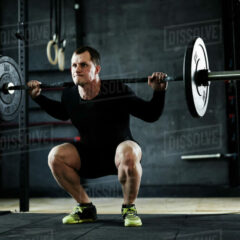











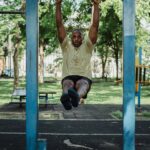

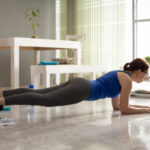

 Bodyweight exercises don’t just build muscles—they promote functional strength, which is essential for everyday activities. By focusing on compound movements, these exercises engage multiple muscle groups at once, improving coordination and stability.
Bodyweight exercises don’t just build muscles—they promote functional strength, which is essential for everyday activities. By focusing on compound movements, these exercises engage multiple muscle groups at once, improving coordination and stability.





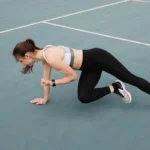


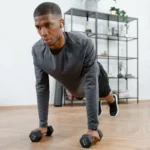




 It’s more than just convenience, though. There’s strong evidence linking grip strength to overall health. Studies suggest that a firm handshake might indicate a healthy heart and a lower risk of cardiovascular issues. So, this isn’t just about holding on tight; it’s about holding on to your health.
It’s more than just convenience, though. There’s strong evidence linking grip strength to overall health. Studies suggest that a firm handshake might indicate a healthy heart and a lower risk of cardiovascular issues. So, this isn’t just about holding on tight; it’s about holding on to your health.


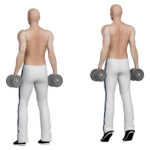
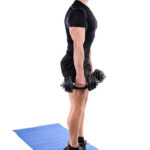



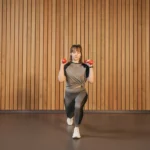



 Building comprehensive arm strength calls for a combination of both compound and isolation exercises. Compound movements like push-ups and pull-ups are your go-to for engaging multiple muscles. Push-ups, for instance, work the chest, shoulders, and triceps in one go, offering a full upper-body workout in a single move. Pull-ups, on the other hand, challenge your back and biceps, boosting overall arm strength.
Building comprehensive arm strength calls for a combination of both compound and isolation exercises. Compound movements like push-ups and pull-ups are your go-to for engaging multiple muscles. Push-ups, for instance, work the chest, shoulders, and triceps in one go, offering a full upper-body workout in a single move. Pull-ups, on the other hand, challenge your back and biceps, boosting overall arm strength.